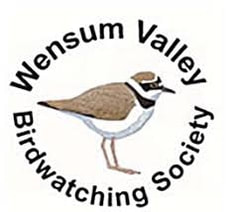|
Speaker: James Lowen Reporter: Sue Gale We have had talks from James Lowen, a good friend of the club, before this, and talks from many enthusiasts, but I think this was the evening that most forcefully promoted the presenter’s enthusiasm for his subject. It was on 7.7.2012 that James first met a Poplar Hawk Moth, and everything changed! He then delved into the world of mothing, discovering that there are around two thousand five hundred species to be seen, including migratory moths like the Silver Y Moths are important pollinators, almost half of them carrying pollen. Since his conversion James has travelled over 14000 miles in search of them! Most moth-ers start trapping moths in their own gardens, but moths can be found
everywhere. Winter mothing is perhaps the most challenging because of the cold, but there are still moths to be found, and some of them even contain their own antifreeze. Another survival strategy is temporary dormancy, even extending to the loss of wings in some females of a species found in the Highlands of Scotland. Numbers increase as Spring advances, and there are many other clever tricks to discover: The Pale Tussock moth produces sounds to jam the radar of predatory bats. Many species have developed a furry body to keep out the cold. The Peppered Moth, well known to students of evolution, developed a darker variant for more efficient camouflage in our polluted urban areas, but as we clean up the air the paler variant is again in the ascendancy. That is only one form of camouflage, and other moths might look like a leaf or a twig, the best example of the latter being the gorgeous Buff Tip. The difference between butterflies and moths is by no means obvious, with the butterfly families taking up a small section right in the middle of the moths on the taxonomy tables. Indeed, in France and Germany there is no separate word for moths, which are just know as “night butterflies”. Hawk moths are often the types of moth that first attract people to mothing. They are glamorous and a challenge to collect as some are endemic to small areas, like the Striped Hawk Moth in Suffolk - and it’s a desert species. The big attraction in Norfolk is the Bedstraw Hawk Moth, found in only a small area of the county. Others are enthusiasts for the Clearwings: There are 15 species of these and they are mimics, looking like various wasps, or even Hornets. Some of them even buzz! Lures have been invented to help control pests in agriculture, but they can also be used by moth-ers. Unsurprisingly there has been a big increase in reports of Clearwings since they became available. Micro-moths are not as scary as many new moth-ers fear, in spite of the large numbers. Also, some of them are as large as the macros. Some of them are even known to lek! James has found the Fabulous Coddling Moth in his garden, a first for Norfolk, and in 2019 was delighted to discover the Hypercalla, previously declared extinct. As more people take up moth trapping and identification the pool of knowledge about these insects is bound to increase. Wetlands are not something we associate with moths, and many areas have been lost over the years because of drainage for agriculture, and this has made some species even rarer. James was involved in a search for the Marsh Moth, rare even in Victorian times and only found as a male until recently. However, James managed to find and photograph the female of the species for the first time ever! Another search for the Marsh Carpet has identified Norwich as the HQ of this species, tracked down to a fishery in Hellesdon, where James caught 3 of the species. Climate change has led to 14 new species colonising the UK, although at the same time 50+ species have gone extinct. In fact four times as many moths are in decline as are increasing. A worryingly familiar story. There are many more tales of mothing and descriptions of fascinating moth species in James`s new book, Much Ado About Mothing. Far too much to fit into a very enjoyable evening talk . Many thanks to James.
0 Comments
Leave a Reply. |
Please feel free to read through our reports from our monthly indoor / online meetings. Archives
May 2024
Categories |

 RSS Feed
RSS Feed
